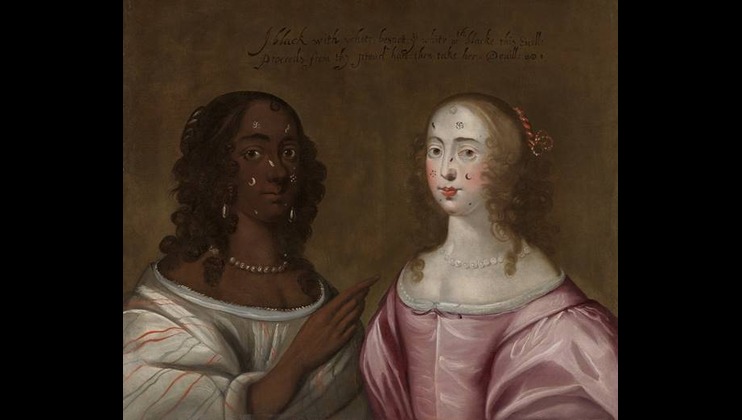
Two Women Wearing Cosmetic Patches (c.1655) is going on public display in the UK for the first time at its new home, Compton Verney.
After being saved for the nation in 2023, and then undergoing an 18-month conservation and research project at the Yale Center for British Art, Two Women Wearing Cosmetic Patches (c.1655) is going on public display in the UK for the first time at its new home, Compton Verney.
The picture was purchased by Compton Verney with generous support from the National Heritage Memorial Fund (NHMF) and from the Arts Council England/V&A Purchase Grant Fund, along with Compton Verney’s own Collections Settlement, after the UK Government placed an export stop on its sale to the Yale Center for British Art, partly because of the ‘highly unusual’ depiction of a Black female sitter in a painting from this period.
The middle decades of the 17th century in Britain were characterized by radical political, religious and social change. Against this backdrop, an artist created this remarkable painting that spoke to the fears and anxieties crystallizing around a perceived increase in moral laxity, gender transgression and the insidious influence of foreigners. The painting reminds viewers that sinful behavior leads to the devil and exhorts them to seek salvation.
This autumn, it will form part of a display that reveals fascinating insights into attitudes to morality and race, technical analysis of how the painting was created, as well as presenting compelling evidence as to the identity of the artist who created it.
Extensive research undertaken by Compton Verney and curators and researchers at the Yale Center for British Art has now raised the possibility that Two Women Wearing Cosmetic Patches was painted by Jerome Hesketh (active 1647-1667).
Two Women Wearing Cosmetic Patches (c.1655) will be on display in the Women’s Library, at Compton Verney. It will be displayed alongside John Bulwer’s famous book Anthrometamorphosis: the man transform’d or, the artificiall changeling (1653) and Francis Hawkin’s A discourse upon some innovations of habits and dressings against powdring of hair, Naked-Breasts, Black Spots and other unseemly Customes,1653, on loan from Trinity College, Cambridge. Both books bear illustrations that are similar to the painting.
This display will be in place for two years, during which time Compton Verney also hopes to work with artists and community groups to respond to the painting.
Further Information: Home Page | Compton Verney